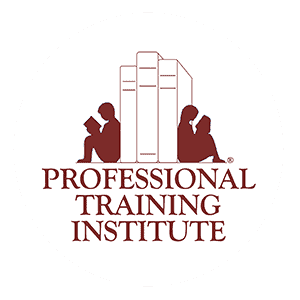Shane is a very bright fourth grader who has a strong vocabulary and enjoys when his parents read to him. He is creative, artistic, and loves to build complicated structures with Legos. Mathematics comes easily to him, particularly geometry. He loves social studies and science, particularly when it involves hands-on activities, but Shane struggles to read and spell basic words. Shane has dyslexia.

October is National Dyslexia Awareness Month and since at least 1 in 10 people has symptoms of dyslexia, it’s important to know the facts.
==> Are you looking for Dyslexia tutoring services? Contact us to learn how we can help!
What is dyslexia? Let’s start out with the official definition and then unpack the meaning. The International Dyslexia Association (IDA) defines dyslexia as the following:
Dyslexia is a specific learning disability that is neurological in origin. It is characterized by difficulties with accurate and/or fluent word recognition and by poor spelling and decoding abilities. These difficulties typically result from a deficit in the phonological component of language that is often unexpected in relation to other cognitive abilities and the provision of effective classroom instruction. Secondary consequences may include problems in reading comprehension and reduced reading experience that can impede the growth of vocabulary and background knowledge (Lyon, Shaywitz, & Shaywitz, 2003, p.2). (1)
The fact that dyslexia is neurological in origin means that the brain of a person with dyslexia works differently than a person who is not dyslexic. Researchers use functional magnetic resonance imaging, or fMRI to demonstrate the differences. John D. E. Gabrieli, a neuroscientist at Massachusetts Institute of Technology (MIT), observed that poor readers showed significantly less brain activity in six brain regions important for connecting print and sound. (2)
Dyslexia is a language-based learning disability because a person with dyslexia processes language differently than a person without dyslexia which makes learning to unlock the English language extremely difficult.
This disability is often unexpected in relation to a person’s cognitive abilities, although that is not to say that a person with a cognitive impairment can’t also have dyslexia. It does tend to run in families so knowing the family history is important. Dyslexia is not due to lack of intelligence, unwillingness to work hard, or desire to learn.
There are secondary consequences because dyslexics aren’t reading so they aren’t being exposed to as much vocabulary and background knowledge as peers who are learning through reading. Since it’s hard to learn if you can’t read, it’s important to know some of the warning signs.
Common Characteristics of Dyslexia
Many of us have one or two of these characteristics, however; that does not mean that we all have dyslexia. Individuals with dyslexia typically have many of these characteristics that persist over time and interfere with learning to read and write significantly.
Oral Language
- Late learning to talk; may have trouble pronouncing words
- Difficulty acquiring vocabulary or using age appropriate grammar
- Difficulty following directions
- Inability to rhyme (3)
- Doesn’t notice when nursery rhymes have repeated first sounds (Peter Piper Picked…)
- Inconsistent memory for words, lists, and directions
- Trouble knowing the sounds of letters
- Slow to learn the alphabet letter names or forms (4)
Reading
- Difficulty learning to read
- Difficulty remembering names and shapes of letters, or naming letters rapidly
- Poor sight word recognition (the, am, said)
- Persistent confusion with b, d, p, q (beyond first grade)
- Misreading or omitting common short words (a, you, so)
- “Stumbles” through longer words
- Poor reading comprehension because words aren’t being read
- Slow, laborious oral reading
- Trouble persisting with and comprehending longer reading assignments
Written Language
- Difficulty organizing written language into sentences and paragraphs
- Trouble learning to spell (student may do well on weekly spelling tests, but has many mistakes in daily work)
- Difficulty proofreading
- Commonly confuses homonyms in writing (their, there, they’re)
Other Characteristics
- Insightful, bright, witty, creative, and innovative
- Makes and keeps friends easily
- Strong comprehension of orally presented information
- May solve complex mathematical problems in their head
- Very good at understanding maps and diagrams
- Enjoys hands-on activities; putting things together
- Good at geometry (shapes, angles)
It’s important to keep in mind that not all students who have difficulties with these skills have dyslexia. The only way to confirm a diagnosis of suspected dyslexia is to have formal testing of reading, language (including rapid naming) and writing skills. It’s even more important to understand that dyslexia is very treatable.
In honor of National Dyslexia Awareness Month, we will feature a new blog post about dyslexia each week for the entire month of October. We will discuss topics like dyslexia and the brain, helpful reading programs for dyslexics, and advantages of being dyslexic. Check in each week and let us know if you have any questions!
(1) International Dyslexia Association, Adopted by Board November 12, 2002, www.interdys.org
(2) Association For Psychological Science, “fMRIs Show That Dyslexia Isn’t a Matter of IQ,” posted September 28, 2011, www.psychologicalscience.org
(3) Inability to detect rhymes at ages 3 and 4 correlates with reading disabilities, Corinne Smith, Learning Disabilities Association of America March 1, 1995
(4) Symptoms of Specific Reading Disability (Dyslexia) in grades k-2, Louisa Moats










Jaydin Skinner says: